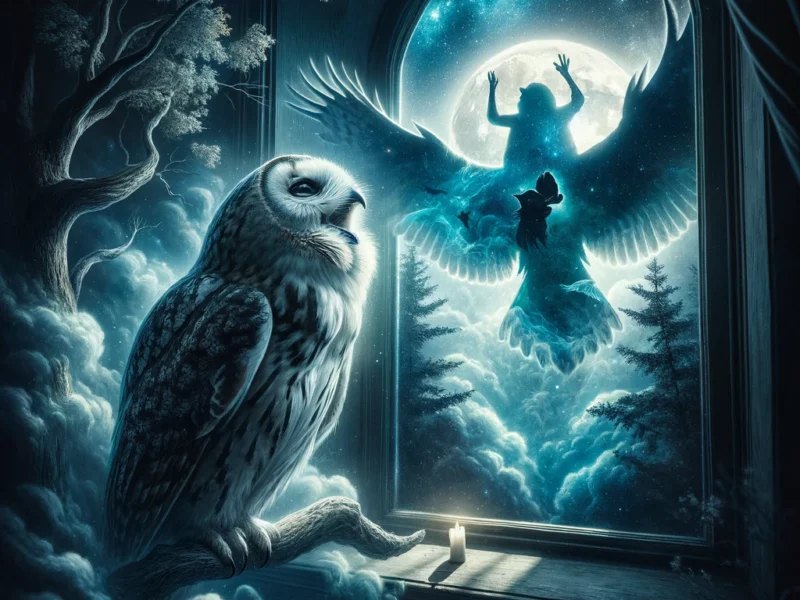St. Patrick's Day is about much more than wearing green and attending parades. This holiday holds deep cultural and spiritual significance for the Irish people and Irish communities around the world.
In this comprehensive guide, we will explore the history behind St. Patrick's Day, its symbolic rituals and traditions, as well as how it evolved into a global celebration of Irish pride and heritage.
The Spiritual Meaning and Origins
St. Patrick's Day originated as a religious feast day commemorating the death of Saint Patrick, the patron saint of Ireland. Patrick was a 5th century Christian missionary credited with converting Ireland to Christianity. He used the shamrock, a three-leaf clover native to the country, as a symbol to explain the Holy Trinity.
The spiritual meaning behind this day lies in honoring St. Patrick's missionary work and celebrating the arrival of Christianity in Ireland. Many attend mass and offer prayers in his honor. The Lenten restrictions on eating meat and drinking alcohol are lifted for this holiday.
The Story Behind St. Patrick
According to legend, St. Patrick was born in Britain as Maewyn Succat around 387 AD. At age 16, he was captured by Irish raiders and sold into slavery in Ireland. During his 6 year captivity as a shepherd, he turned to religion for solace. He eventually escaped back to Britain, later returning to Ireland as a missionary to convert the pagan Irish to Christianity.
Some key events in in St. Patrick's legendary life include:
- Using the shamrock plant to explain the Holy Trinity concept to pagan druids
- Banishing all snakes from Ireland (symbolic)
- Establishing over 300 churches across Ireland
- Baptizing over 120,000 Irish people
By the time of his death on March 17, 461 AD, Ireland had become predominantly Christian, laying the groundwork for the religion being embedded in Irish national identity.
Evolution Into Cultural Celebration
While St. Patrick's Day retains religious overtones, it has also evolved into a broader celebration of Irish culture and heritage. Many treats, drinks, customs and symbols associated with the day bear little religious meaning but hold special cultural significance for the Irish people.
Global Popularity
As Irish communities flourished across America and other Western countries, they brought St. Patrick's Day traditions with them. Over time it turned into a larger celebration of ethnic pride and connection with their Irish roots.
Today it is celebrated worldwide across many cultures, thanks mainly to Irish diaspora introducing the rest of the world to their national holiday.
Major cities hold elaborate St. Patrick's Day parades, turning their iconic buildings and landmarks green for the occasion. Popular celebrations include:
- New York City dying the Hudson River green
- The Chicago River dyed green and massive downtown parade
- Green ketchup and beer across American dining and drinking establishments
- Dublin's multi-day St. Patrick's Festival with parades, shows and outdoor parties
- Montreal and Toronto hosting parades drawing over a million people
Traditions and Symbolism
From wearing green clothes to leaving out pots of gold, many traditions have come to represent this holiday. Here is an overview explaining the meaning behind key customs.
Wearing Green
Green is the national color of Ireland, with shades representing the lush green landscapes and fields of the Emerald Isle. Wearing it on St. Patrick’s Day shows Irish ancestry and solidarity.
In myth, wearing green also provided camouflage and invisibility against being pinched by mischievous leprechauns!
Shamrocks
The shamrock is probably the most enduring symbol associated with St. Patrick and Ireland as a whole.
This particular variety of three-leaf clover is said to have been used by St. Patrick himself to explain Christianity’s Holy Trinity concept to the pagan Irish during his missionary work.
Today, people wear shamrock badges, necklaces or corsages, with Irish dancers incorporating shamrocks into their ornate costumes.
Irish Food and Drink
On St. Patrick's many traditional Irish dishes and drinks get featured on restaurant and pub menus to celebrate the occasion:
- Corned beef and cabbage - This classic Irish American dish hearkens back to Irish immigration
- Shepherd's Pie - Filled with classic Irish ingredients like lamb, potatoes and onions
- Irish Soda Bread - Quick bread made with soft wheat flour and baking soda
- Irish Stew - Filled with lamb or mutton, onions, potatoes and parsley
- Guinness Beer - Ireland's most iconic brew gets consumed in large quantities! Sláinte (cheers)!
Leprechauns, Fairies and Magic
Leprechauns remain an iconic symbol and Irish folklore characters, usually depicted as mischievous shoemaking elves who hoard their pot of gold at the end of the rainbow.
According to myth, leprechauns would use their magic to play tricks on anyone trying to steal their gold. Folktales abound of people trying to outsmart the clever creatures through various elaborate traps.
While leprechauns were part of pagan Irish mythology, the church incorporated aspects into St. Patrick's story as a clever way to explain Christianity to a superstitious population. The church presented St Patrick "banishing the snakes" (paganism) from Ireland as metaphorical magic.
Celebrating St. Patrick’s Day
There are many fun ways to honor Irish culture and this holiday beyond drinking green beer! Here are 7 ideas:
1. Attend a Parade
What better way to experience Irish culture than joining hundreds of thousands of spectators cheering on floats, dancers and marching bands parading down city streets!
Over 100 US towns and cities host parades for the occasion. The New York City parade draws 150,000 marchers and a million attendees each year.
2. Use Irish Sayings and Toasts
Take the chance to make toasts with classic Irish blessings like "Sláinte!" (health) or "Erin go Bragh!" (Ireland Forever).
Other Irish phrases for celebrating include:
- "Lá Fhéile Pádraig Sona Daoibh!" - Happy St. Patrick's Day!
- "May the road rise up to meet you"
- "May God grant you always a sunbeam to warm you"
3. Cook Irish Food and Soda Bread
Beef stew, shepherd's pie, and Irish brown bread or soda bread make iconic homemade dishes for this occasion. Look up some authentic recipes to create a special Irish meal this St Paddy's.
4. Listen to Celtic Music
What's an Irish party without some classic jigs and reels! Put on music from Irish bands like U2 or The Cranberries to liven up your celebration. Play some fiddle, flutes or Celtic harp music as ambient background sound.
5. Learn an Irish Dance
Riverdance brought Irish step dancing into the mainstream. On St Patrick's Day try out basic jigs like reels and slip jigs yourself in your living room - they are fun energetic dances meant for groups.
6. Watch an Irish Film
Immersing yourself in Irish cinema and TV shows gives a valuable glimpse at Irish landscapes, accents and cultural aspects. Pick classics like Waking Ned Devine, Once or Angela's Ashes.
For maximum Green Isle views, watch Leap Year starring Amy Adams or PS I Love You with locations in Wicklow and Dublin.
7. Read Irish Literature
Ireland has produced many world-famous writers and storytellers over the centuries - Joyce, Beckett, Wilde, Yeats and Swift to name a few.
Curl up with an iconic Irish book like Ulysses or Celtic tales from William Butler Yeats to connect with Ireland's literary culture. Sage advice from Irish poets and authors may inspire you!
Key Takeaways
- St. Patrick's Day started as feast day commemorating the missionary St Patrick's role in converting pagan Irish to Christianity in the 5th century
- Its evolved into globally popular secular holiday celebrating Irish culture and heritage
- Iconic symbols like the shamrock, leprechauns and wearing green represent key aspects Irish identity
- Cities worldwide host major parades and events that attract millions of attendees
- There are many fun ways to celebrate beyond drinking green beer, such as attending local Irish cultural events, cooking traditional Irish foods or doing Irish jigs!
The holiday represents the rich framework of Irish culture interwoven with historical religious legacy. However you decide to spend March 17th, take a moment to reflect on iconic traditions that generations of Irish upheld through history to preserve their identity.
Be sure to don some green, wish others "Lá Fhéile Pádraig Sona Daoibh - Happy St. Patrick’s Day!" - and revel in some Irish cheer!
Frequently Asked Questions
Still have some lingering questions about the history and practices around St. Patrick's Day? Here is an FAQ covering common queries:
Q: When is St. Patrick's Day and what does the date signify?
A: It falls on March 17 every year. This was the date of St. Patrick's death in 461 AD. The church designated it an official feast day in his honor a few centuries later.
Q: Do Irish people in Ireland care about St. Patrick's Day?
A: Yes! In Ireland March 17 is a national holiday - schools and businesses are closed. Major cities have multi-day festivals with parades, shows, parties and more drawing hundreds of thousands of locals and tourists.
Q: Where are the biggest St. Patrick's Day celebrations?
A: While Dublin, New York, and Boston have iconic parades, many other major global cities have since initiated their own versions showcasing Irish culture. Some of the biggest and most boisterous celebrations outside of Ireland happen in New York, Chicago, Savannah, Sydney, Montreal and Tokyo.
Q: Do Protestants celebrate St Patrick’s Day too?
A: Yes! While a Catholic saint, St. Patrick's Day has cross-denominational appeal today as both Catholics and Protestants, especially in Northern Ireland, mark March 17th as a celebration of cultural heritage.
Q: Why do people pinch each other if they don’t wear green?
A: This tradition originated in the story of leprechauns using their magic to pinch anyone they could spot not wearing green. It was likely started to ensure celebrations stay lighthearted. Today any pinching is just symbolic and harmless.
Q: What are some traditional St. Patrick’s Day games?
A: Fun games themed around Irish culture include potato sack races, Irish treasure hunts, leprechaun gold candy box hunts, and even St Patrick's Day Bingo with words like Blarney, Leprechaun, Rainbow.
Q: Why is everything green on St Patrick’s Day?
A: Originally only the shamrock and wearing green was associated with the holiday. Green's popularity came from Irish nationalism and the color representing the lush green fields and landscape of the Emerald Isle. Today drinking green beer, making green cookies or bagels and cities lighting up green are further expressions of Irish pride.
Q: Are there any special St. Patrick’s Day desserts?
A: Yes, Irish-themed desserts like Irish cream chocolate cups, Guinness chocolate cake, Irish coffee cheesecake or pistachio shamrock cookies are popular. Traditional Irish recipes like Champ (mashed potato blended with scallions) also get featured.
Q: What should I cook to celebrate St. Patrick's Day?
A: Beyond quintessential Irish dishes like shepherd's pie, soda bread, corned beef and cabbage - any hearty, comforting foods highlighting ingredients like potatoes, onions, cabbage, lamb or beef make great St. Paddy's Day fare. Irish stews, braised brisket, roasted root vegetables all fit the bill.
Q: What drinks should I serve?
A: St Patrick's Day is incomplete without ordering or pouring a pint of thick, creamy Guinness stout beer with its iconic two-part pour. Irish whiskeys like Jameson, Tullamore Dew and Bushmills are also very popular libations, often enjoyed straight or on the rocks. Baileys Irish cream liqueur is a key ingredient for multiple cocktail recipes too. Sláinte!


